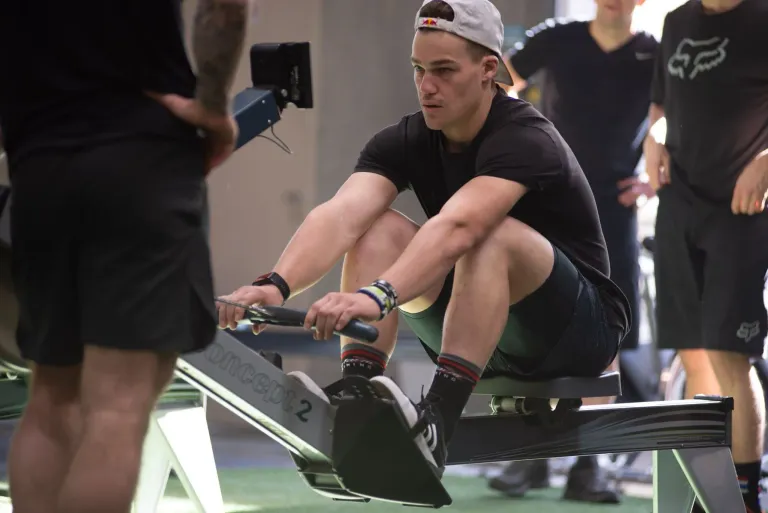How Training is Good for Enduro and Downhill
Training and fitness are huge game-changers for enduro or downhill riding—especially when it comes to performance, control, injury prevention, and just how much fun you’re having on the bike.
Being fit and incorporating basic strength training can significantly improve your riding. It builds control, confidence, and endurance—letting you ride harder, longer, and safer. Stronger legs, core, and upper body help with bike handling, reduce fatigue (like arm pump), and improve reaction time. It also makes crashes less damaging and recovery quicker.
Even just 2–3 basic strength sessions per week (squats, deadlifts, push-ups, planks) can lead to noticeable gains: better posture, more consistent performance, and a big boost in confidence and fun on the bike. You don’t need to be a pro to feel the difference—basic training goes a long way.

Richie Rude, a dominant figure in enduro mountain biking, has developed a training program that emphasizes strength, technical skills, and adaptability. His program, is made by the renowned trainer Todd Schumlick of PerformX Training , who has coached elite athletes like Aaron Gwin and Stevie Smith .
Rude's training is focused on building explosive power and muscular endurance. His strength sessions include compound movements such as squats and deadlifts, which are essential for handling the physical demands of enduro racing.
Regular skills practice is integral to Rude's program. He dedicates time to mastering various trail scenarios, including steep descents, rock gardens, and tight corners. This focus on technical proficiency ensures he can ride complex terrains efficiently during races .
Understanding the importance of fueling and recovery, Rude bases his nutrition to meet the demands of multi-stage enduro events. He emphasizes the need for strategic eating and hydration to maintain performance across stages .
Rude's training also cultivates mental toughness and adaptability. He has learned to balance aggressive riding with equipment preservation, a lesson that became pivotal after early challenges in his enduro career .
In 2025, Rude is returning to his downhill roots, competing with the Yeti / FOX Factory Downhill Team. While he continues to participate in select enduro events, his training now also adds the specific demands of downhill racing, reflecting his versatility as an athlete .
Why strength training is important?
Strength training builds core and upper body stability, which translates directly to better control through technical terrain—think rock gardens, roots, and compressions.
Better grip strength means you can hold onto the bars longer without your hands cramping up or your form breaking down.
For Enduro stages , which are long and physically demanding, being fit means you can ride longer and recover faster between stages. Even downhill, which is shorter in duration, requires repeat efforts and sprint-like power over short bursts—fitness lets you push harder, more consistently.
Another huge benefit of training is injury resistance. Crashing is part ot the game in gravity riding. Strength training helps your body absorb impacts and reduces your risk of injury, a strong core and stable joints (especially shoulders, knees, and hips) are key to bouncing back quickly.
The psychological impact is also noticiable, when you’re not physically wrecked, your brain works better. You make smarter decisions and react faster to sudden changes in the trail.
In conclusion, you don’t need to train like a pro. Just a couple of short sessions a week can make a massive difference. It’s like upgrading your bike—but it’s you that gets the boost, you´ll feel the difference inmediatly.